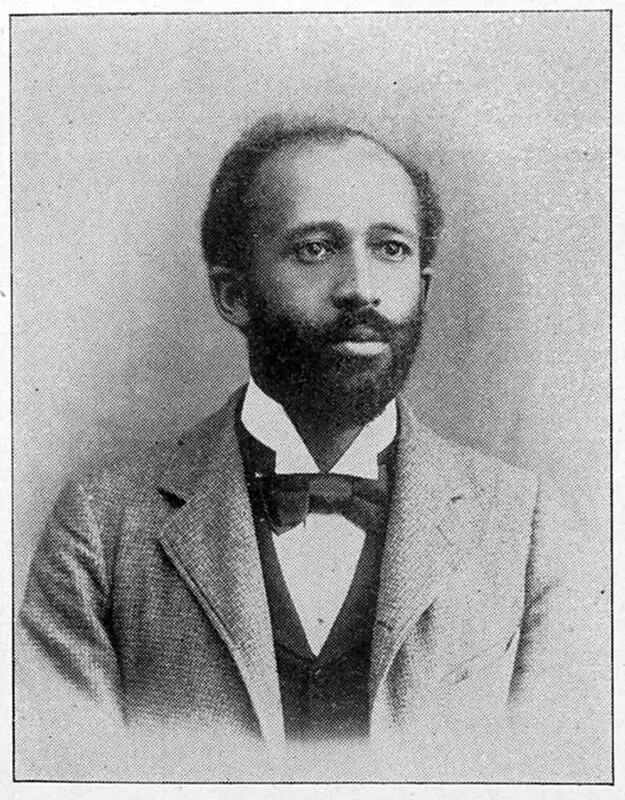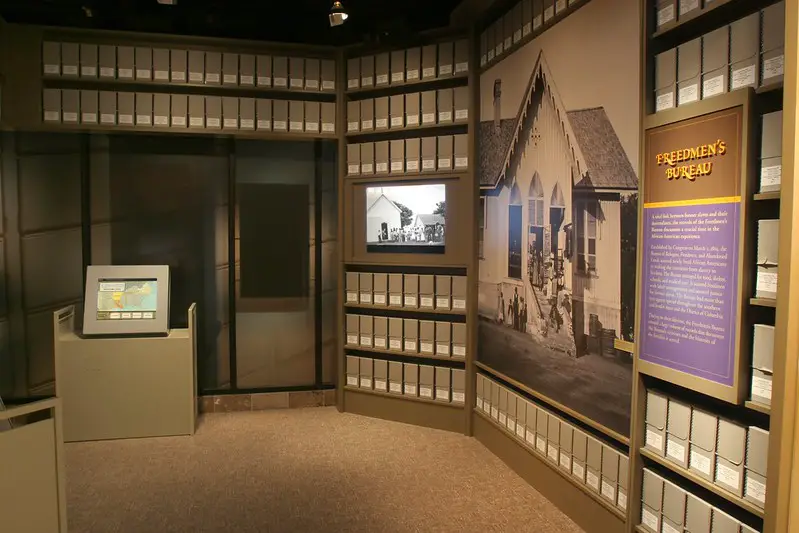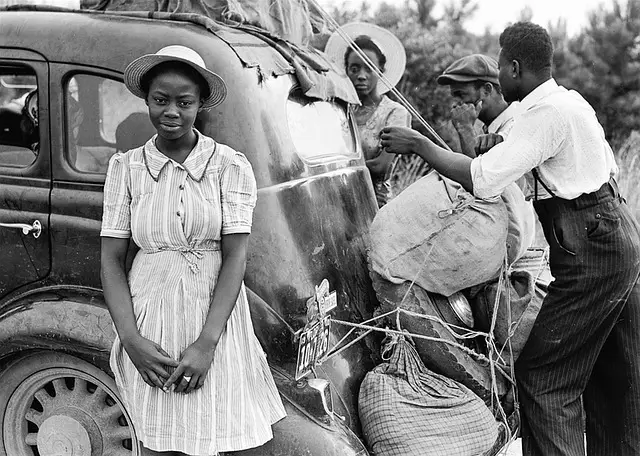No one will deny that slavery constituted a highly appalling time in US history. For a really long time, blacks wanted that all of their sufferings would cease when they were emancipated. However, their hopes were futile. Following their emancipation, new troubles presented themselves.
When slavery was eventually put an end to in the mid-1860s, there were left huge problems related to it and the engulfing job of fully integrating Afro-Americans into American society.
In this summary, you’ll have an insight into an important black activist’s opinions on the enormity of the job that had to be done, the lives of black people of that era, and the numerous difficulties they encountered – within and without.

Chapter 1 – The Freedmen’s Bureau was important in the integration of black people, however, its operation was stopped abruptly.
Imagine this in your mind: There are several people who are supposed to run a marathon, however, there are those among who are very much untrained. They aren’t cognizant of the rules, they haven’t received any training or been provided the proper gear, and they’re compelled to begin running a lot later than other runners.
So, it is obvious that there is no way for the underprivileged runners to truly race with anyone else in the field.
After the abolishment of slavery that lasted for 250 years in America in 1865, the future of 4 million recently emancipated black people didn’t look so bright. So, because of this, the Freedmen’s Bureau was founded to help and empower Afro-Americans.
With no knowledge regarding anything but slavery, black people of the South had little, if they had any, education and had never received any money for their toil. In addition, they dwelled in the same place together with numerous people who would favor the preservation of slavery. The Freedmen’s Bureau started working on building an education system and guaranteeing that the black population was provided with just work contracts and circumstances. The Bureau took on the job of being lawyers for black people in courts to preclude any discrimination.

In spite of the need for this kind of work, most people thought it was against laws for the Freedmen’s Bureau to represent black people. They also put forward such reasons as the view that it put one race first before another and meddled in the executive power of separate states.
You may find this interesting, but it was thanks to this opposition to the Freedmen’s Bureau that eventually brought about the voting rights for African Americans.
Leaving the black population feeble and vulnerable to antagonistic neighbors and leaders in the South could not happen. The sole available option was to grant them the power to vote and they would choose leaders who would be the guard of their interests.
Though giving voting rights to the black population constituted an important event, W.E.B. Du Bois thought that this resulted in an adverse impact on the Freedmen’s Bureau. A lot of people began to consider the bureau’s task as provisional, and the right to vote as the answer to the intricate hurdles encountered by the black population. However, what Du Bois says is that this was not what happened.
Du Bois thought that a fixed and well-managed Freedmen’s Bureau would have fully integrated the black population on societal, economic, and political levels. This task was not even halfway through at the time of the dissolution of the bureau in 1869. Though African Americans had the power to vote now, they became exposed and had the tough job of elevating themselves up in a society that continued to act severely against them.
Chapter 2 – The concentration on industrial education was a settlement that inflicted a handicap on the black population.
We’ve seen in the previous chapter that an important question in the years following slavery was how to assist the black people to be part of qualified people who were regarded and experienced equal treatment as a citizen.
Booker T. Washington, a prominent Black leader during those years, suggested an answer to this problem. Washington motivated Afro-Americans to accept discrimination and rather, concentrate on acquiring practical facilities. These facilities would assist them to be hired for positions in the novel industrial economy, obtain material wealth, and, consequently, earn the regard of the white population. Further, what Washington thought, this regard would ultimately provide even status for the black population.
However, Du Bois vigorously opposed to this suggestion.
Du Bois considered Washington’s suggestion as an unsatisfactory settlement. It simply benefited the business interests of the white population of the North and South and at the same time closed the avenues for the tough discussion of the black population’s civil rights. Through leaving the struggle against segregation and concentrating on hand-operated work, Du Bois thought that the black population was acknowledging the notion that they constituted second class citizens.
Apart from this, Du Bois considered Washington’s suggestion of abandoning the struggle for civil rights as inconsistent and lacking foresight in numerous forms.

Unless civil rights were given, the black workers and property owners would never see an equal treatment. By letting themselves be segregated against, the black population would slowly get disheartened and their self-regard would vanish. Furthermore, when it came to concentrating on fundamental education and industrial practice, this overlooked the truth that everyone possesses distinct facilities and abilities. According to Du Bois, it wasn’t sensible at all to turn all black population into a manual worker while there were a great many among who were cut for being leaders, thinkers, artists, and teaching.
Finally, Du Bois opposed to Washington’s suggestion due to the fact that his suggestion left the labor of developing black people only to African Americans.
Du Bois thought that getting past what slavery left behind was unlikely to achieve without assistance from the white population. So, by spurring the black population to work and achieve equality. To a degree, Washington’s suggestion was excluding the US nation as a whole from the responsibility of developing the black population. The sole method to earn equality in America was for African Americans to actively, though in a nonviolent way, call for the equal treatment, possibilities, and rights like those of the white population.
Chapter 3 – Following the abolishment of slavery, many African Americans who lived in the South did farming on borrowed land and lived under appalling circumstances.
In order to make it easier to imagine what the life of the black population resembled following the emancipation of the blacks, Du Bois utilizes the case of a county in the Black Belt.
This southern region was actually given this name because of its dark, productive soil. A great many Black people were transported here to be exploited on its cotton plantations; when slavery was abolished, the black people were as numerous as half a million. Most former black slaves continued to stay in the Black Belt following emancipation – however, emancipation didn’t signal a better life for the black population.
Most Blacks went back to work on farms; in the county which Du Bois did research, approximately nine-tenth of the population’s did farming as their profession. However, since they weren’t given much assistance in terms of owning land following emancipation, they borrowed farmlands from White landowners, giving a portion of their corps to them in return. Usually, they were unable to buy seeds, tools, or even food and clothes to maintain them by the time of the harvest. As a result, they purchased these things on credit.
African American farmers didn’t have many options when it came to which crops they were able to grow. In spite of the fertile soil on which it was possible to grow a diverse range of products, cotton constituted the sole crop planted on approximately seven-tenth of the land. What is the reason for this? Well, cotton was a highly-valuable product and, consequently, it served as the sole kind of payment that was recognized by many landowners and merchants.

We all know that there is nothing wrong in terms of requesting rent if it is leased to someone else. However, for African American farmers of the South, this system was devised in forms that didn’t allow them to get rid of debt and hampered them from developing.
After the emancipation of African Americans, landowners and merchants viewed debt as a means of making African American people continue laboring for them. Therefore, in numerous examples, a rise in the price of cotton indicated a rise in a farmer’s rent. Moreover, should a Black farmer harvested a lot of corps the previous year, then his landowner raised the rent the next year.
Aside from laboring for a small quantity of profit, the housing circumstances of many African American farmers in the Black Belt section were dreadful. They, together with their spouses and children, either dwelled in old plantation cabins or in novel buildings constructed in the same places. Most of these structures were in terrible conditions and there were solely one or two rooms inside them, causing overpopulation.
Confronted with these terrible houses and a debt system that restrict them significantly, the farmers were supposed to choose one of two options. Either they could discover a way to purchase their own land – which could be only achieved by a highly small portion. Or, they could relocate closer to towns, looking for better possibilities.
Chapter 4 – Following many years after emancipation, it wasn’t possible to find many chances where positive interactions between the black and white population would take place.
For the entire history of the US, there has been a separation between the blacks and the whites in various ways.
Gradually, these separations started to lessen. However, directly following emancipation, especially in the South, the boundaries dividing the races were very noticeable. Furthermore, these boundaries involved different things in various aspects of life.
For starters, African American and White people in the South lived in distant places to each other, even when they got closer, they were still apart from one another. In some instances, African American and White people were directly next to each other, but divided by a street; there were also instances of one community that was encircled by another. However, no matter how organized they were, it never required much effort to identify where a White or African American community began and ended.
What Du Bois observed showed something interesting: African American and White communities that belong to the same social class seldom had any proximate contact. The most impoverished African American communities usually situated close to affluent White communities, whereas African American communities that were wealthier than other African Americans lived in proximity to badly-off White communities. What Du Bois asserted is that this indicated that African American and White people were usually presented with the worst of one another.
As for economic possibilities, there was also a discrepancy between the Whites and the Blacks. We have both African Americans, most of whom slavery had caught off guard for any other work, which rendered it challenging for them to be in competition for work positions, particularly if White bosses preferred whites to blacks and the White people, who, through segregation or downright unfair practices, played on African American people who weren’t better than they were.

For instance, Du Bois gives the account of an African American man who was deceived into purchasing a farm three times. Ultimately, the landowner kept not only the money and the title of the ownership, causing the African American man to remain without anything. Due to this unfair environment, the African American population could solely make headway to a certain extent economically.
The African American population was handicapped in the political arena as well. Not only White people but also African American people had the power to vote and participate in politics, however, solely Whites were able to do it freely.
As for African American people, using these rights became difficult due to bribes, election frauds, and even violent force. These and numerous other strategies were employed to restrain African American voters and their power to elect leaders who would protect them. Taking into account all this, it won’t come as a surprise that most African American people started to view politics as a dirty game and chose not to participate in it at all.
Chapter 5 – In the same fashion as its congregant, the African American church has found themselves in a dilemma of standing up to racial inequalities and accepting them.
Do you know the statement, “Religion is the opium of the people?”
This phrase is said to be stated by the German philosopher Karl Marx and usually employed to explain the way religion assists people to endure pain and injustice.
However, for the instance of the African American church, religion meant more than a source of ease. From the period of slavery to its abolishment and the period following emancipation, the church had a role as a significant organization that reflected the transforming conditions of the black population.
At the times of slavery, the bible’s teachings on obedience and its assurance of serenity and peace after death helped slave Blacks to tolerate their suffering. However, in the northern states, in which slaves were emancipated far earlier than in the South, religious preachers and their churches had a distinctive posture. Their preaches involved sentiments against slavery. This is where the African American church began to be part of the abolitionist movement.
During the years following slavery which, as mentioned earlier, caused numerous disappointments for African American people, the church began to be the heart of African American social life. In the church, African American people were able to openly talk about their opinion, they had the support and prominent leaders in the body of religious men, and there was a precise understanding of what is correct and wrong.
Du Bois observed these religious areas as representing everything that Blacks were not allowed to benefit from in their daily lives; it was very much comprehensible why churches became so influential. Du Bois drew attention to the fact that in 1890, there were roughly 24,000 African American churches in America – which amounts to one church per 60 African American families.

However, though Black churches affected in a good way the lives of their congregants, they confronted a crucial problem. The troubles that African American people encountered as a race threw an unavoidable shadow. The consequence of this was the rise of two radical options for African American churches: they could urge audacious and active stand or preach silent obedience.
According to Du Bois, African American churches were in a position where they were reeling in between these two radical churches. There are those that just worshipped in the same fashion as the Whites and those that presented social and economic possibilities and urged submission. However, in spite of this, according to Du Bois, African American churches and their millions of congregants constituted a huge power that could one day focus its power toward tackling racial unfairness and inequality.
Chapter 6 – In their endeavor to achieve freedom and civil rights, African American people have been working to settle the violent internal conflict.
Having both African American and American identities following emancipation impacted more than the practical facets of Black lives. It had a mental influence on how Black people regarded themselves as well.
Du Bois initially became aware of this when he was a kid after a White classmate declined to receive his visiting card. The moment this happened, he became aware that he stepped on the part of a world of which he wasn’t a member and the members of which regarded him as inferior.
When he grew up, Du Bois applied the notion of a veil to illustrate the division between the two worlds.
The veil hindered Whites from viewing African Americans as fellow humans, and African Americans from breaking away from adverse ideas of Blackness. Living on the line between these two worlds induced a twisted understanding of self, and Du Bois considered tackling this twist as the aim for African American people in the US.
When blacks lived in the times of slavery, emancipation was regarded as the answer to every problem that African American people had to deal with. However, after slavery had been abolished, emancipation led to issues of a different kind. From a crippling devoidness of economic opportunities to neglect and violence, freedom was not even close to what most people had pictured.

Thus, African Americans started looking for other ways of keeping dignity and having equal status as Americans. Among these ways were voting rights, education, and economic progress – and they tried achieving these while fighting with the bias that kept saying African American people weren’t worthy of any of these things. However, in the same fashion as freedom, reaching these goals didn’t induce the transformation that the black population hopefully expected.
But, Du Bois devised a theory explaining the reason behind it.
He thought that removing the veil and gaining equality for the black population wasn’t necessary for achieving one particular goal. How he regarded it, the notions of freedom, education, education for work, and political power lacked some elements and were weak on their own. Rather, they constituted the components of a bigger objective, all coming together and urging African Americans toward a space that would let them look at themselves without the glasses of racism.
The Souls of Black Folk by W.E.B. Du Bois Book Review
The abolishment of slavery did not offer a flawless solution to the struggle of African American people in the USA. Rather, it led to a tense time where African American people confronted economic, political, and social struggles while negotiating and striving for equal status as American citizens. Being a sociologist and a foremost civil rights activist, W.E.B. Du Bois’s views were crucial in molding the discussion around race in America.
